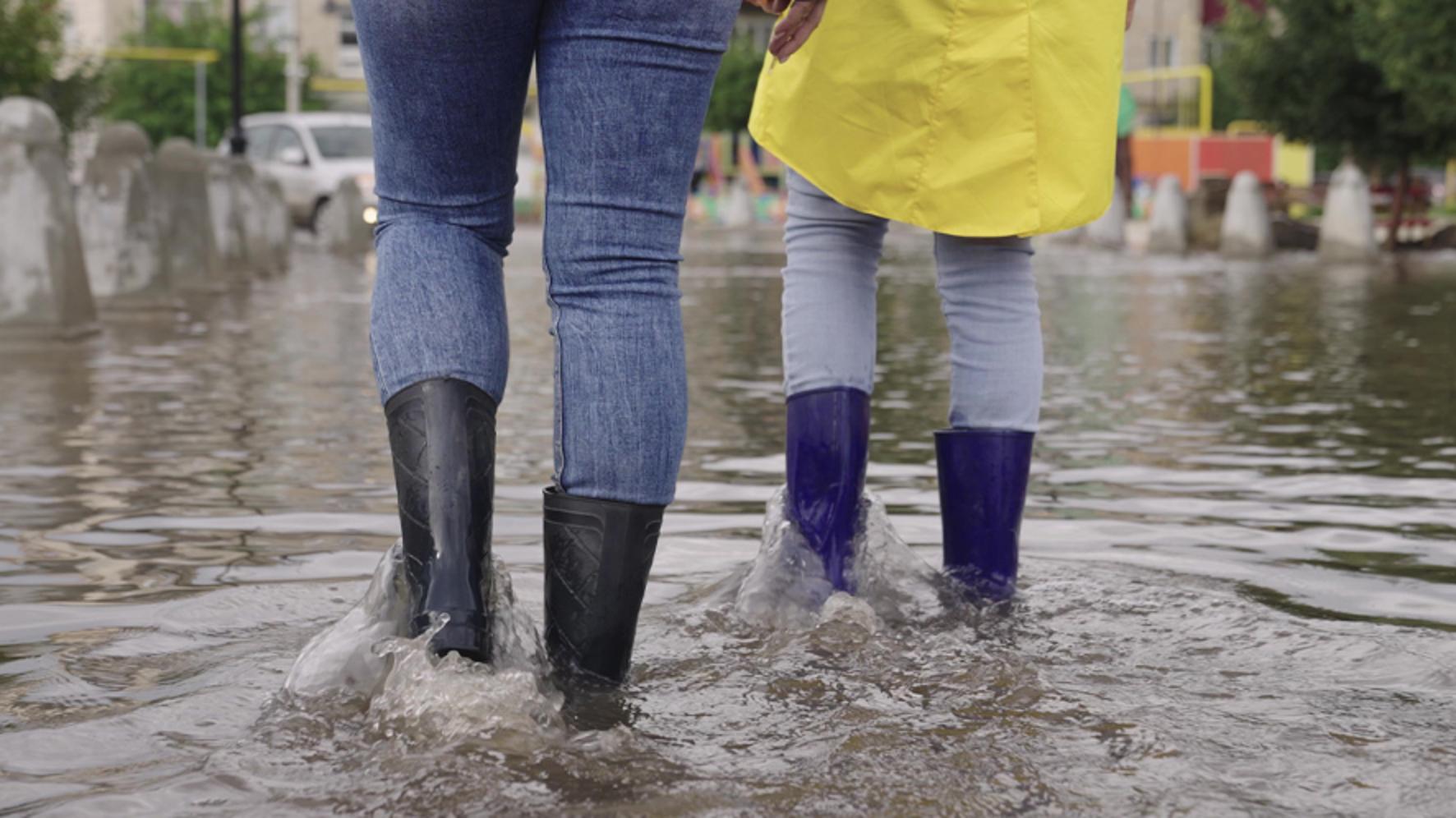Flash floods can be hard to predict. They happen when a huge amount of rain falls in a short space of time, and it’s a risk we face all year round.
At South West Water, we know that these events are becoming more frequent and intense. When the heavens open, the ground—especially after a long, dry summer like the one we’ve just had—can’t soak up the water fast enough. The water runs quickly off the hard ground, often overwhelming our surface water drains and putting significant pressure on the combined sewer network.
These events can occur during wetter months too, when already waterlogged ground may be unable to absorb more rain which increases the risk of flooding.
While this overland flooding enters surface water drains which are not owned or managed by us, the consequences certainly can affect our customers. That’s why we are deeply committed to reducing flooding that impacts our sewer systems.
Why is flash flooding getting worse?
The science is clear: as our climate warms, the atmosphere holds more moisture. This leads to heavier and more intense downpours, which can rapidly turn into flooding that damages roads, businesses, and homes in both rural and urban areas.
Hazel Tranchant, our Head of Tactical Asset Management, explains just how complex the challenge is:
“Predicting when flooding will occur, and what impact it will have, can be difficult as it is a complex phenomenon affected by multiple variables—such as where rain falls, for how long, and how saturated the land is.
“Although the effects of overland flash flooding aren’t our responsibility, we’re working hard behind the scenes to keep sewers in great condition to reduce and prevent flooding from our sewers during heavy rain. We work closely with local councils on practical solutions to flooding to help protect communities.”
Our action to protect you from flash flooding
We don’t just wait for the rain to fall; we work hard behind the scenes right to upgrade our infrastructure and use nature-based solutions to create a more resilient network.
Our actions can be categorised in these ways:
- Identifying high-risk areas
We carry out regular surveys, gathering local knowledge, and work with local councils to help manage the impact in areas that are frequently affected by flash flooding.
We also keep a close eye on weather reports. By monitoring forecasts, we can get ahead of potential incidents, ensuring we have extra teams on hand to assist in potentially flooded areas before the worst of the weather hits.
- Slowing the flow of rainwater
We use green drainage solutions to reduce the amount of rainwater entering our wastewater systems. This includes creating natural features such as ponds or ditches that help absorb and slow down surface water flow.
Our award-winning Upstream Thinking catchment management programme involves planting trees and restoring peatland areas. This helps the land absorb significantly more water naturally, drastically reducing the flood risk downstream.
- Keeping the pipes flowing
We carry out regular, thorough deep cleaning and jetting of sewers and large underground storage tanks. This prevents blockages—caused by things like wet wipes and cooking fat—which are a major contributor to sewer flooding during heavy rainfall.
We are also working in rural areas to improve drainage infrastructure and help ensure that less field run-off, sediment, and debris enter the sewer network.
How you can help, all year round
When heavy rain comes, if the sewers are already clogged with things like wet wipes and cooking oil, flooding is more likely. You can help to reduce the risk of flooding by being careful not to put the wrong things down the toilet or sink.
Our Bin It, Don't Block It page tells you more about how you can prevent blockages. One key step is to follow the 3Ps rule: only flush pee, poo and paper. Anything else goes in the bin.
Also, be sure to never pour cooking oil or fat down your sink. These substances solidify in the pipes, creating fatbergs that cause severe blockages and lead to sewer flooding.
We’re sharing this message during Flood Action Week, a campaign launched by the Environment Agency to raise awareness of flood risks.
